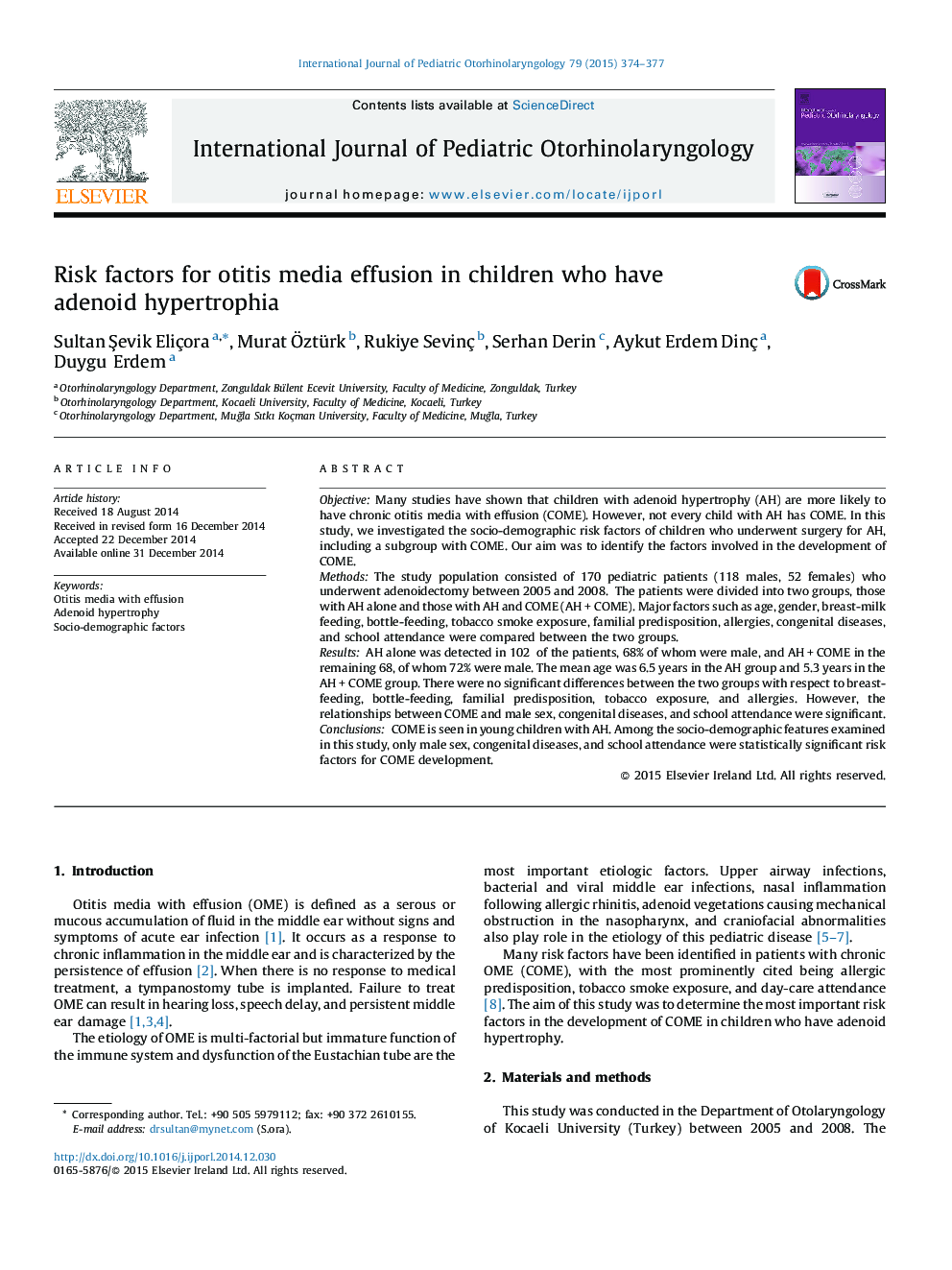| Article ID | Journal | Published Year | Pages | File Type |
|---|---|---|---|---|
| 4111972 | International Journal of Pediatric Otorhinolaryngology | 2015 | 4 Pages |
ObjectiveMany studies have shown that children with adenoid hypertrophy (AH) are more likely to have chronic otitis media with effusion (COME). However, not every child with AH has COME. In this study, we investigated the socio-demographic risk factors of children who underwent surgery for AH, including a subgroup with COME. Our aim was to identify the factors involved in the development of COME.MethodsThe study population consisted of 170 pediatric patients (118 males, 52 females) who underwent adenoidectomy between 2005 and 2008. The patients were divided into two groups, those with AH alone and those with AH and COME (AH + COME). Major factors such as age, gender, breast-milk feeding, bottle-feeding, tobacco smoke exposure, familial predisposition, allergies, congenital diseases, and school attendance were compared between the two groups.ResultsAH alone was detected in 102 of the patients, 68% of whom were male, and AH + COME in the remaining 68, of whom 72% were male. The mean age was 6.5 years in the AH group and 5.3 years in the AH + COME group. There were no significant differences between the two groups with respect to breast-feeding, bottle-feeding, familial predisposition, tobacco exposure, and allergies. However, the relationships between COME and male sex, congenital diseases, and school attendance were significant.ConclusionsCOME is seen in young children with AH. Among the socio-demographic features examined in this study, only male sex, congenital diseases, and school attendance were statistically significant risk factors for COME development.
